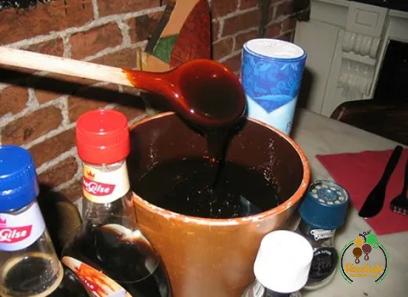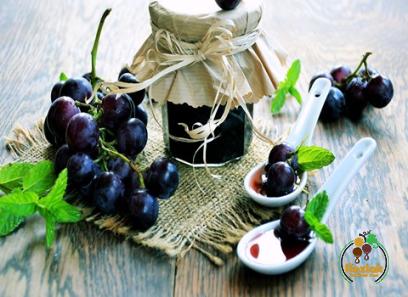Grape juice, the sweet nectar extracted from the bountiful vineyards, is widely loved for its vibrant colors and delightful flavors. However, not all grape juice is created equal. The acidic levels present in grape juice play a crucial role in enhancing its taste and preserving its quality. In this article, we will delve deeper into the world of grape juice acidity, exploring its importance, sources, and implications for both the industry and consumer. The Significance of Acidic Levels Acidity is a fundamental component of grape juice, adding complexity and balance to its taste profile. When grape juice is fermented into wine, acidity contributes to its crispness and vibrancy.

.
 Likewise, in the case of grape juice, optimal acidity is responsible for refining the natural sweetness and overall sensory experience. Sources of Grape Juice Acidity The level of acidity in grape juice is influenced by various factors, including grape variety, climate, soil composition, and harvesting time. Different grape varieties exhibit varying natural levels of acidity, with some being naturally more acidic than others. For example, grapes such as Sauvignon Blanc and Riesling tend to have higher acidity, resulting in a zesty and refreshing grape juice. Grapes grown in cooler climates generally develop higher acidic levels due to the slower ripening process. The combination of cool temperatures and long growing seasons allows for the acids to accumulate gradually, resulting in more pronounced tartness.
Likewise, in the case of grape juice, optimal acidity is responsible for refining the natural sweetness and overall sensory experience. Sources of Grape Juice Acidity The level of acidity in grape juice is influenced by various factors, including grape variety, climate, soil composition, and harvesting time. Different grape varieties exhibit varying natural levels of acidity, with some being naturally more acidic than others. For example, grapes such as Sauvignon Blanc and Riesling tend to have higher acidity, resulting in a zesty and refreshing grape juice. Grapes grown in cooler climates generally develop higher acidic levels due to the slower ripening process. The combination of cool temperatures and long growing seasons allows for the acids to accumulate gradually, resulting in more pronounced tartness.
..
 Conversely, grapes grown in warmer regions may possess lower levels of acidity, yielding a mellower grape juice. Soil composition can also impact grape juice acidity. Soils rich in minerals and nutrients tend to produce grapes with higher acidity levels due to the absorption of essential compounds during the grapevine’s growth. Importance for the Industry and Consumers For the grape juice industry, understanding the acidic levels in grape juice is crucial for quality control and product development. By monitoring and managing acidity, manufacturers can create a consistent flavor profile, meeting consumer expectations time and again. Moreover, controlling acidity facilitates the creation of different grape juice styles, catering to diverse consumer preferences. Some individuals may favor acidic grape juice for its refreshing and tangy attributes, while others might prefer grape juice with a more subdued tartness. By offering a range of acidity levels, producers can target various consumer tastes and expand their market share.
Conversely, grapes grown in warmer regions may possess lower levels of acidity, yielding a mellower grape juice. Soil composition can also impact grape juice acidity. Soils rich in minerals and nutrients tend to produce grapes with higher acidity levels due to the absorption of essential compounds during the grapevine’s growth. Importance for the Industry and Consumers For the grape juice industry, understanding the acidic levels in grape juice is crucial for quality control and product development. By monitoring and managing acidity, manufacturers can create a consistent flavor profile, meeting consumer expectations time and again. Moreover, controlling acidity facilitates the creation of different grape juice styles, catering to diverse consumer preferences. Some individuals may favor acidic grape juice for its refreshing and tangy attributes, while others might prefer grape juice with a more subdued tartness. By offering a range of acidity levels, producers can target various consumer tastes and expand their market share.
…
 From a consumer standpoint, knowledge of the acidity levels in grape juice helps make informed choices. Those who appreciate a more robust flavor profile can seek out grape juice with higher acidity, enjoying its refreshing and tangy nature. Conversely, individuals preferring a milder taste can opt for grape juice with lower acidity, providing a smoother drinking experience. Conclusion The varying acidic levels found in grape juice play a vital role in enhancing its taste, complexity, and overall quality. Factors such as grape variety, climate, soil composition, and harvesting time all contribute to the acidity levels present in grape juice. Both the grape juice industry and consumers benefit from an understanding of these nuances, enabling the production and enjoyment of grape juice tailored to individual preferences. Whether it’s a zippy Sauvignon Blanc grape juice or a mellower Chardonnay-inspired delight, the spectrum of grape juice acidity provides a delightful symphony for the taste buds. So, the next time you savor a glass of grape juice, pay attention to its acidic notes and appreciate the intricate balance it brings to this natural elixir.
From a consumer standpoint, knowledge of the acidity levels in grape juice helps make informed choices. Those who appreciate a more robust flavor profile can seek out grape juice with higher acidity, enjoying its refreshing and tangy nature. Conversely, individuals preferring a milder taste can opt for grape juice with lower acidity, providing a smoother drinking experience. Conclusion The varying acidic levels found in grape juice play a vital role in enhancing its taste, complexity, and overall quality. Factors such as grape variety, climate, soil composition, and harvesting time all contribute to the acidity levels present in grape juice. Both the grape juice industry and consumers benefit from an understanding of these nuances, enabling the production and enjoyment of grape juice tailored to individual preferences. Whether it’s a zippy Sauvignon Blanc grape juice or a mellower Chardonnay-inspired delight, the spectrum of grape juice acidity provides a delightful symphony for the taste buds. So, the next time you savor a glass of grape juice, pay attention to its acidic notes and appreciate the intricate balance it brings to this natural elixir.











Your comment submitted.